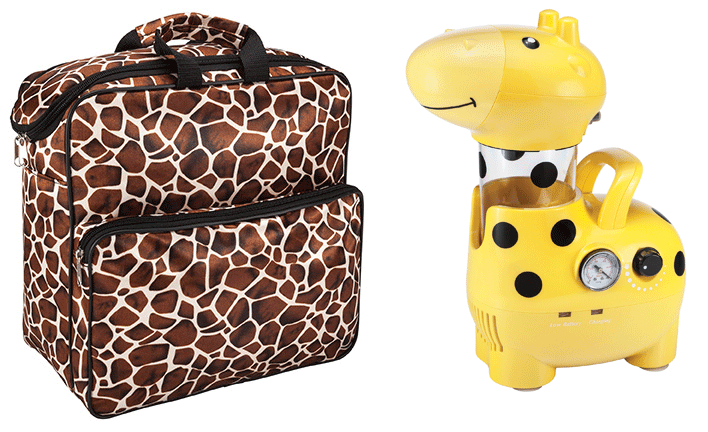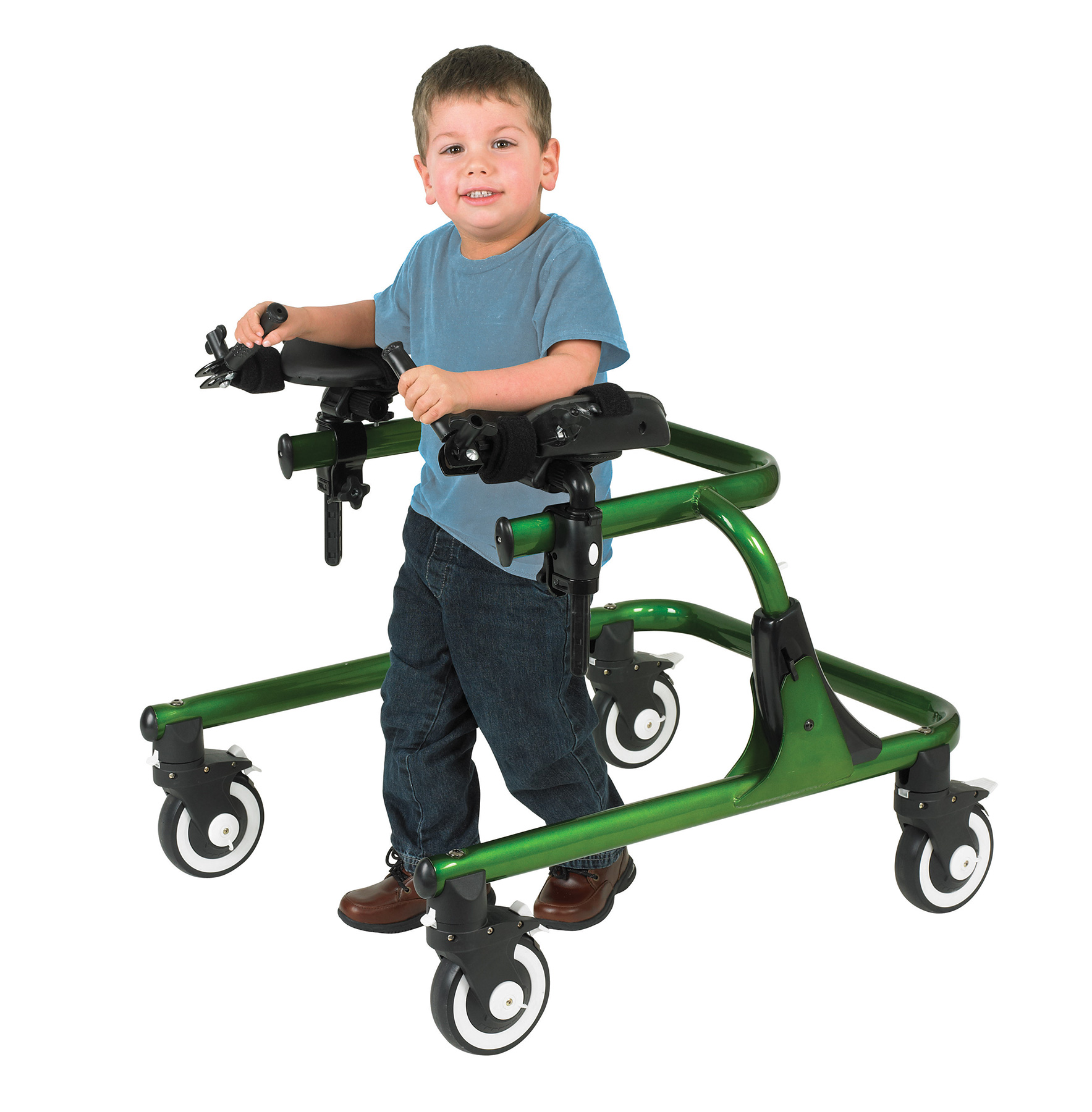Although pediatric products often cost more than standard adult products, the higher cost is generally due to unique design enhancements. Likewise, they also have special companion products and accessories designed specifically for kids. Whether a character nebulizer or a child’s wheelchair, these products are precisely engineered to meet the requirements of children. Many HME dealers and supplier companies do not understand the pediatric market, says Christopher Cheek, vice president of MEDQUIP Inc., Bluffton, S.C. Providers perceive the market as more complicated and challenging than it is, or they think it is less profitable. However, pediatrics can be a great resource for any DME provider and is a very rewarding segment of the market, Cheek adds. An array of subcategories offers the opportunity and potential for new revenue streams and profitability. “In today’s business environment of declining reimbursements, dealers should maximize their resources to capitalize on the entire marketplace,” says Cheek. Working with a pediatric client can also provide an opportunity to inform the family of other products available through a DME provider—from pediatrics to geriatrics.
Fee for Service
As an innovator in the pediatric category, MEDQUIP is preparing to launch the world’s first character-style pediatric suction machine. Similar in design to its pediatric character nebulizers, the child-friendly unit is designed in the shape of a giraffe to help ease stress and anxiety during patient treatments. The durable, portable suction units are also intended to meet the rigorous requirements for effective aspiration of fluids from the airways of pediatric patients. The proprietary design, which has undergone extensive evaluation to ensure quality, is expected to come to market in the first quarter of 2014. MEDQUIP pioneered and developed the AIRIAL line of pediatric and adult compressor nebulizer systems. MEDQUIP introduced the first ever, complete pediatric character nebulizer to the market almost a decade ago, and today the company offers a comprehensive line of pediatric and adult nebulizers. The company’s extensive line also includes pulse oximetry, TENs units, blood pressure monitors and other products. Generally, pediatric products offer a host of retail-oriented options that can be paired with companion products to help offset an initial increased cost of the pediatric item. Unlike Medicare- supplemented equipment, pediatric products generally involve a fee for service that provides immediate revenue. Essentially, pediatric products are a purchase item rather than a rental item, thus increasing revenues—although there may be exceptions. To enhance retail sales, marketing is crucial, especially if the provider is new to the segment, and advertising is essential to the lifeblood of any retail business. MEDQUIP can assist providers to develop their own unique marketing materials by providing product information and graphic images. The approach ensures that dealers are effectively promoting their own businesses while focusing on MEDQUIP’s product segments. Cheek suggests working with local school systems to build an awareness program and an allergy awareness program as ways to build business. Dealers should also market to the pediatric physicians’ community.
Complex Rehab
Complex rehab providers in the pediatric sector should be proactive and expand the number of products they offer, spanning multiple categories, says Keith Wright, director of sales and marketing at Columbia Medical, Santa Fe Springs, Calif. Educating customers, their families and referral sources on the breadth of products available can increase business. Certified professionals working within providers can help connect a family with the equipment they need, working in conjunction with physical and occupational therapists and physicians. “The team works together to recommend the best equipment,” Wright says.
 The giraffe suction unit and carrying case from MEDQUIP
The giraffe suction unit and carrying case from MEDQUIP
For 35 years, Columbia Medical has been a premier supplier of assistive equipment for children with special needs, from bathing to toileting to transportation. The company manufactures customized solutions for a range of individuals, and some products can accommodate adults, or a 19-year-old who might weigh up to 200 pounds. The configuration of each product is individualized for each child with accessories, sizing and positioning options. A well-trained, localized sales force has knowledge of the products and offers evaluation units to ensure the right equipment in the right size, with the right positioning, is offered to each child. The use of demonstration and evaluation equipment simplifies the process and avoids wasted time to provide each child the equipment he or she needs. The company’s Optima TSS (toilet and shower system) uses high, wraparound back supports and positioning. It is a portable unit that combines a roll-in shower chair with a toileting system. Also, the company’s Spirit APS (adjustable positioning system) offers complex positioning for a car seat. Despite the continuing need for the equipment, price pressures from Medicaid (the primary funding source) are a challenge. A few other funding sources are available, including private insurance and various waiver programs. Despite lower reimbursements, or maybe because of them, quality is an important differentiator when choosing equipment, Wright says. High-quality equipment may cost more, but it can be used for a prolonged period of time as the child grows, which lowers overall costs. “We focus on the needs of the child and also on the needs of the caregiver,” Wright says. For example, a bathing transfer system can minimize the need for a caregiver to lift an individual into a bathtub. “Our systems minimize the effort of transferring a child, which provides increased safety and lessens the risk of injury to the caregiver,” Wright says. He mentions the company’s OmniVerse Transfer System as an example. Providers should also remain engaged to increase awareness of the need for products to provide positioning supports, which ensure proper postural support for the individual. Adjustable positioning allows equipment to be used for a longer span of time without having to repurchase equipment, in effect, growing (being modified) as the child grows. “Serving a child’s needs from an early age across a breadth of products positions the provider to be a resource for the family throughout an individual’s life,” Wright says. “We focus on pediatrics, and as the child grows and goes through various stages, their needs change, and the provider is seen as that resource for equipment.”
Physical Therapists
Wenzelite Rehab division of Drive Medical, Port Washington, N.Y., manufactures a line of mobility and seating products for children and teens with special needs, including high-quality products offering maximum support, safety, ease of use and growth capability. Solutions for everyday/all-day activities strengthen a child’s ability to maintain proper posture and balance, improve mobility and enhance peer socialization and interaction in a secure environment. Wenzelite has local sales representatives and regional managers to assist HME providers by providing literature, demo equipment for evaluation and joint in-services at clinics and facilities.
 Pediatric products from Drive Medical come in child-friendly bright colors.
Pediatric products from Drive Medical come in child-friendly bright colors.
Wenzelite’s Trekker Gait Trainer is designed for individuals who do not have the functional gait skills or postural control to use a standard walker safely and independently. It provides exceptional support in learning to walk, maintaining momentum and building muscle skills. The Trekker Gait Trainer is simple to fold, store and transport in a car. It can be used in the anterior and/or posterior position, is height-adjustable with a range of tool-free accessories and is available in three sizes. Accessories include adjustable forearm platforms, hand grips, thigh and ankle prompts, hip positioner with cushioned pad, trunk support, soft seat harness, hand loop and guide bar for an attendant. “Working together with physical and occupational therapists to define the user’s specific needs will provide the pediatric client with a product that provides proper support and has a child-friendly appearance” says Abraham Goldstein, executive vice president of Drive Medical’s Wenzelite Division. To be effective, products for the pediatric market involve more than just manufacturing an adult product in a smaller size, he says. Wenzelite’s research and development department works to design high-quality products at competitive prices to enable HME providers to overcome and reduce the challenges of lower reimbursements. To succeed in the pediatrics sector, HMEs should hire Assistive Technology Professionals (ATPs) or Rehabilitation Technology Suppliers (RTSs) and form relationships with pediatric clinics for referrals, Goldstein says.
Young Mobility
Introducing power mobility to complex rehab patients at a very young age can be a sensitive topic for parents, but embracing mobility earlier enables children to progress at the same developmental level as other children, even if power mobility isn’t a long-term option. Children need independent mobility—independent meaning that a parent is always providing a level of supervision nearby. Mobility enables their visual and cognitive abilities to progress normally, especially in conditions such as myelomeningocele, a type of spina bifida that involves physical, but no cognitive, impairment. Cognitively impaired children, too, should get as many developmental advantages as possible, including early access to power mobility, says Magdalena Love, clinical education specialist, Permobil Inc., Lebanon, Tenn. “Some parents and therapists view power mobility as the last option, but in fact, it is a way to get the child functional in their environment. Power mobility helps them do what their peers are doing. There has been consistent research showing that kids benefit early from power mobility.” Permobil provides complex power wheelchairs for the pediatric population, including the smallest wheelchairs for the youngest children, such as the Koala front-wheel power chair with the smallest base length among the company’s pediatric chairs. It places children over the drive wheel, which makes driving more intuitive. Also, Permobil’s K450 chair can elevate and tilt and has the ability for the seating to go all the way to the floor to enable children to take part in floor activities or to access small tables. The chair is also beneficial for individuals with Osteogenesis Imperfecta (OI)—minimizing risk of fracture during transfers is very important. The Swedish company manufactures products in its North American headquarters in Lebanon, Tenn. For HME providers, pediatric complex rehab takes additional time. Patients may need to try demo products longer, and they may need additional adjustments. Dealers must be willing to take an active role in switching equipment and trying it out, adjusting various features, etc. “You can’t provide equipment without follow-up,” Love says. “The patients need a little more, and these complex seating systems are expensive.” (And some have good margins.) Complex systems with very involved seating are some of the most costly to provide. Medicaid provides good funding for children younger than 21, although it varies by state. Permobil can assist in appeals if there is a denial. “It’s important to fight for what the client needs,” Love says. “There is a medical justification for each feature we provide, and it’s important to keep requesting those features and using the Medicaid benefit.” Dealers can promote more complex rehab business by being involved in related organizations such as the Muscular Dystrophy Association, Spinal Muscular Atrophy (SMA) Foundation, the Osteogenesis Imperfecta (OI) Foundation, United Cerebral Palsey (UCP) and the Spina Bifida Association. Remaining in good standing with these programs can lead to more referrals, Love says. “When you’re trying to break into a new market, it’s important to leave a positive first impression and to provide good and continuous service,” she adds. Another success factor is to commit staff to specialized training relevant to pediatric seating. “As a company, we want to support our dealers; we don’t sell directly to patients,” Love says. “If dealers have questions, they should contact us.” Dealers can always find information on Permobil’s website, including videos, “slicks” describing products and order forms. Dealers may also contact the dealer to get demos. “We have a staff of qualified clinicians and ATPs that are willing to support dealers interested in targeting this business,” Love says. The company assists with evaluations, provides sample equipment for evaluations, showcases case studies of success with other clients with similar needs and helps with advocacy if needed.




